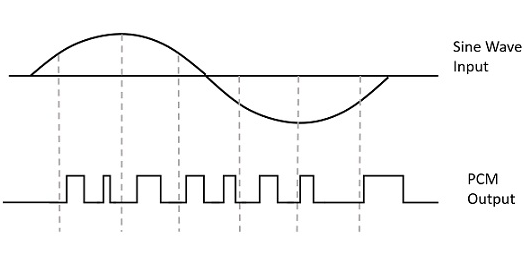Pulse Code Modulation (PCM) is a digital modulation technique used to convert analog information into a binary sequence. Each digit in the binary sequence represents the approximate amplitude of the original signal at that instant. The new digital message signal represents the original signal discretely in both time and amplitude. The basic elements of PCM include the transmitter section, channel, and receiver section.
Transmitter Section
The transmitter section consists of a(n) low pass filter (LPF), sampler, quantizer, and encoder. The analog message signal first passes through the LPF which eliminates the high-frequency components of the message signal to avoid aliasing. The sampler collects data at instantaneous values to reconstruct the signal discretely. The quantizer reduces excessive bits and compresses the data. The encoder designates each quantized level with binary code and minimizes the used bandwidth.
Channel
The PCM channel mainly consists of an input and output regenerative repeater. The input repeater increases signal strength. The output repeater compensates for signal loss and reconstructs the signal to also increase signal strength.
Receiver Section
The receiver section consists of a regeneration circuit, decoder, and reconstruction filter. The regeneration circuit receives the signal from the channel and passes it along to the decoder. The decoder circuit demodulates the pulse coded waveform to reproduce the original signal. The reconstruction filter is another LPF which eliminates unnecessary high-frequency components from the restored signal. [1]

